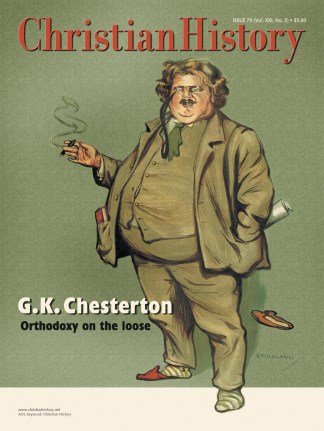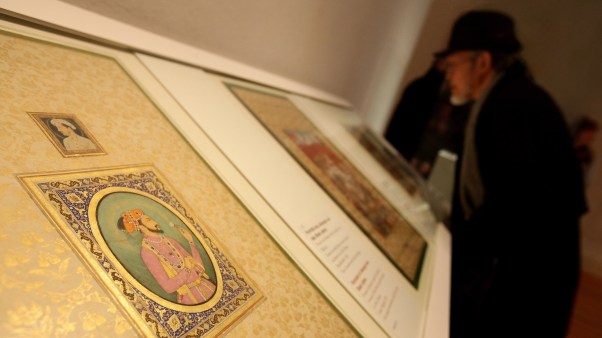Nearly everyone agrees that Chesterton achieved something extraordinary with his Father Brown stories. Yet after literally hundreds of commentators have had their say, there is still no consensus about what his achievement was or in what ways Father Brown is significant. Truly, these critics are so at odds with one another that often they do not seem to be discussing the same stories.
Part of the problem is that Chesterton’s stories resist analysis from the specialist’s point of view. For example, not many who are experts in the field of detective fiction understand Chesterton as a philosopher. These critics react to Chesterton’s moral and political ideas as if they were an intrusion of irrelevant propaganda.
Similarly, few students of Chesterton are mystery story enthusiasts, and fewer still are conversant with scholarship on the detective genre. They often fail to appreciate Chesterton’s work within the framework of this literary form.
The Father Brown stories follow a format developed in the nineteenth century for readers of the new mass-circulation magazines. The formula, invented by Edgar Allan Poe in the 1840s, boils down to this:
A mystifying crime is discovered, and a plausible explanation proves elusive. The mystery deepens until the eccentric but brainy sleuth (not a member of the official police) deduces the truth and reveals the surprising solution at the story’s conclusion. The sleuth then reappears in subsequent magazine stories to solve other puzzling crimes.
Arthur Conan Doyle perfected this approach with his tales of the peerless Sherlock Holmes, written for The Strand magazine in the 1890s. Conan Doyle aimed to compete against the serialized novel with a character whose fascinating personal appeal—rather than a continuing cliff-hanger plot—would keep readers coming back for more. It was the greatest success in magazine publishing history.
Conan Doyle’s triumph was not lost on The Strand‘s competitors. A host of Holmes-like sleuths soon appeared, each with his own series of linked short stories. Unfortunately none of these had the Sherlock Holmes magic, and today the stories seem hopelessly artificial and contrived.
Chesterton said as much at the time. He was the first respected literary critic to write extensively on the genre and the first to formulate the rules that would come to govern the classic “whodunit.”
Chesterton’s ideas dominated the so-called Golden Age of the mystery story and remained unchallenged until American pulp-fiction writers introduced the street-wise and tough-as-nails private eye, of which Dashiell Hammett’s Sam Spade remains the archetype.
Rules of the game
Chesterton insisted that detective stories must focus on domestic crimes enacted in familiar settings, with the action restricted to a short span of time, a confined place, and a small cast of characters. He conceived of the stories as a kind of literary game and demanded that writers play fair by showing their readers all the clues known to the sleuth.
He also insisted that, however complex the mystery might be made to appear, its eventual solution had to be simple enough to explain in a single shout from the rooftops. His illustrative example was, “The Archdeacon is Bloody Bill!”
Chesterton deplored the focus on mere mechanics of crime and detection—the easy way out for writers trying to imitate Conan Doyle. Chesterton faulted a story if it turned on a trick of detail rather than the drama of human interaction.
He disliked learning at the end that a high wall had not been a barrier to the suspect because the man had once been a pole-vaulter, or discovering on the last page that the main confusion in a story had been caused by the presence of someone’s identical twin brother. Chesterton demanded an emphasis on the human aspects of the case—motives, emotions, and choices freely made.
In 1910 Chesterton’s critical theories were put to the test when his Father Brown stories began appearing in The Saturday Evening Post. The stories followed the Poe and Conan Doyle formula, but they also fulfilled Chesterton’s own rules and ideals. When the first 12 tales were collected and published as The Innocence of Father Brown, mystery specialist Ellery Queen called it “The Miracle Book of 1911.”
The Father Brown series eventually reached a total of 51 short stories, collected in five volumes. They are universally admired for their ingenious crimes and brilliant detection. No mystery writer has devised more inventive plots or so effectively paraded his clues before a perplexed readership.
The heretic hunter
Of equal significance for the future of the genre, Chesterton turned away from artificially tricky puzzles to an emphasis on character, following the example of the great Victorian novelists who had dabbled in the detective story form—Charles Dickens, Robert Louis Stevenson, and Wilkie Collins.
The Father Brown stories achieve remarkable depth and richness in their intellectual themes. Chesterton, of course, was a man of ideas, and he was convinced that ideas influence behavior—bad ideas cause bad behavior. He therefore peopled his stories with villains and fools whose ignoble actions flow from their mistaken ideologies.
Thus Father Brown is actually more of a heretic hunter than he is an amateur policeman. As the priest explains to one of his detective friends, he has never had anything to do with “running down criminals.” Instead, he makes it his business to confront the same errors that Chesterton warred against in his journalism.
Each of the stories may be read as an analogue of one of Chesterton’s argumentative essays. Perhaps the most familiar example is “The Queer Feet,” in which Father Brown laments the sort of moral blindness that makes servants invisible to their masters. The priest’s view precisely echoes Chesterton, who commented at length on the subject in his Illustrated London News essay of September 9, 1911.
Father Brown captured the attention of the leading mystery writers of the day and set the tone and direction of detective fiction for a generation. E.C. Bentley dedicated his groundbreaking 1912 novel Trent’s Last Case to Chesterton and insisted that he had written the book with Chesterton’s principles in mind.
In 1929, when Anthony Berkeley founded London’s Detection Club, one of its avowed purposes was to promote the very ideals that Chesterton had articulated as a critic and had realized so successfully in his stories. The small and select group included such luminaries as Dorothy L. Sayers, Agatha Christie, and Freeman Wills Crofts.
Chesterton, of course, was duly installed as the club’s first president, a position he held until his death in 1936.
John Peterson publishes Gilbert! magazine and edited Father Brown of the Church of Rome (San Francisco, 1996), a collection of 10 Chesterton tales with notes. The Annotated Father Brown is forthcoming.
Copyright © 2002 by the author or Christianity Today/Christian History magazine. Click here for reprint information on Christian History.










